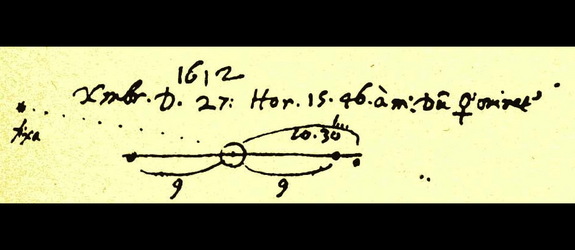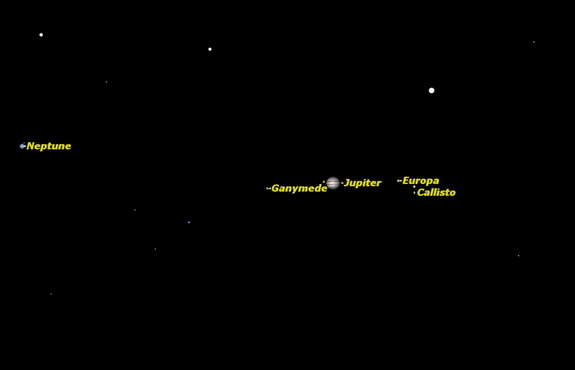Have you ever read the story of the discovery of Neptune? It truly is a triumph of science and mathematics, and part of the reason it is my favourite planet (a hard choice to make). The story goes like this:

It all starts with the discovery of Uranus in 1781 by William Herschel. This was the first ever discovery of a planet, as the Earth and the five visible planets have been known of since the dawn of history. Thanks to Isaac Newton working out the laws of gravitation and the mechanics of the solar system, mathematicians could easily calculate the properties of Uranus from observing it’s orbit. They determined it’s distance, orbital velocity, and the length of its year.
The brilliant yet simple thing about mathematics and science is that you can use the equations to predict where Uranus will be in the future, in the same way that we can predict how long it will take a ball to hit the ground if you know the height you dropped it from. But when mathematicians figured out the future positions of Uranus, astronomers who were observing found that the calculations didn’t agree with what they observed. Uranus was in a different position. This meant one of three things:
- The math or observations were flawed
- Newton’s theory was incorrect
- We were missing something about Uranus
The math and the observations were verified to be accurate, and by this time Newton’s theories were proven (they still work today), so something must have been missing. The idea put forward was that there was another unseen body in the solar system, it’s gravity tugging on Uranus and perturbing it’s orbit.
A mathematician named Urbain Le Verrier decided to do the math and predict where the mystery body should be, and he urged astronomer Johann Galle to search for it at the Berlin Observatory. On September 23rd, 1846, Galle discovered Neptune, only 1 degree from where Le Verrier predicted it to be. This discovery opened the door for the exploration of the outer solar system, and eventually the discovery of Pluto, the Kuiper Belt, and the Dwarf Planets beyond. But that’s another story.
There is more to Neptune’s story however.

In 1612, Galileo was observing Jupiter for the first time, with the first telescope used for astronomical purposes. He noticed a strange star off to the side, and noted it’s position, but also noted that it remained fixed or ‘fixa’ in latin, as seen in the image.
With modern technology, anyone can look back to the position of Jupiter and it’s moons on that famous night, and very easily note that the strange ‘star’ he saw was actually the planet Neptune!

Galileo was the first to observe Neptune! Imagine how he would have felt and how history would have changed if he had realized what he was seeing. The reason Neptune appeared fixed to him was that it was in retrograde motion, where the motion of the Earth cancels out the motion of the planet, making it appear fixed for a short time rather than moving against the background of stars. This fateful configuration was enough to get past his radar, and delay the true discovery of Neptune by over 200 years.
And really, if a genius like Galileo missed Neptune, it simply wasn’t humanity’s time to discover it.
